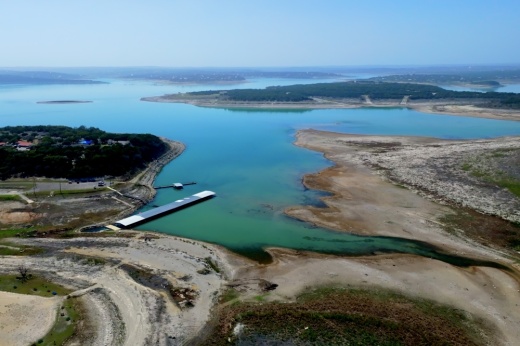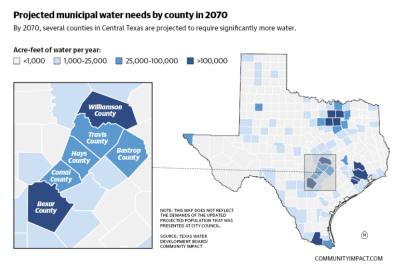The city of New Braunfels is home to 102,218 people, but its population is expected to double by 2040, according to population projections from the Texas Water Development Board 2026 Draft Regional Water Plan. As the population continues to rise, so does the water demand.Bexar, Comal, Guadalupe, Hays and Travis are among several Central Texas counties projected to require significantly more water by 2070.
Much of Central Texas is in an extreme or exceptional drought. In Comal County, 108,472 people are affected by an extreme drought. In Guadalupe County, 131,533 are affected by an extreme drought, according to the National Integrated Drought Information System.
“I don’t see how you can talk about Canyon Lake in our community right now, without talking about the drought that goes hand in hand with it,” Nathan Pence, executive manager of environmental science for the Guadalupe-Blanco River Authority, said during an April 22 Canyon Lake water management public meeting.
Zooming out
This year, water supply and conservation has been top of mind for state lawmakers.
The 2022 state water plan estimates that demand for water in Texas will increase by 9% and existing water supplies will decline by 18% by 2070.
Sen. Charles Perry, R-Lubbock, introduced Senate Bill 7 on March 13, which would expand the types of water projects eligible for state funding and prioritize financial assistance for wastewater treatment projects in small communities, as previously reported by Community Impact. District 73 Rep. Carrie Isaac, who represents New Braunfels, Canyon Lake and other parts of Comal and Hays County, also filed House Bill 5325 on April 7, which would require certain subdivision plats to certify that adequate groundwater is available for the development.
SB 7 was passed by the Senate in early April and heard in the House Committee at the end of April. HB 5325 has had no action, as of press time.
Zooming in
Based on current projections, NBU will have enough supply to meet the current change in demand until calendar year 2042. If conservation efforts are achieved, the utility’s supply will meet demand until CY 2063, according to its 2023 Water Resources Plan Update.
“We have ample supply to take care of demands today and for a long, long time in the future—potentially through build-out,” NBU CEO Ryan Kelso said. The city’s water supply consists of seven sources totaling 50,375 acre-feet of water per year. A combination of surface water, groundwater, and purchased water eliminates NBU’s total dependency on the Edwards Aquifer.
Growing challenges
Ryan Spencer, executive director of Comal Conservation—a nonprofit organization aiming to preserve land, water and wildlife in Comal County—said water is not easy to come by.
“The reality is our communities are defined by water and every gallon—every drop—counts,” Spencer said.
Low water levels at Canyon Lake will have an immediate impact on tourism revenue and could have a significant impact on the recharge of the Trinity Aquifer, he said.
Only about 5% of the rainfall that falls on the surface of the area over the Trinity Aquifer makes it into the aquifer as recharge water, and then it takes about two years for that water to enter the aquifer. The reason why it is so slow to produce is because it is “very disjointed,” Spencer explained.
If the drought continues, he said he anticipates more private wells running dry and intermittent stream flows.
The plan
To keep up with growth and combat drought impacts, NBU is continuing to expand its water portfolio and encourage conservation.
NBU maintained Stage 2 Drought Restrictions in the area, whereas other comparable utilities—like San Marcos, Kyle and Buda—are in Stage 3.
The utility is also expanding its water reclamation facility and looking into Aquifer Storage Recovery, or ASR, according to an email from Reagan Peña, NBU’s director of enterprise communications.







